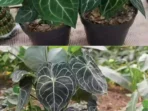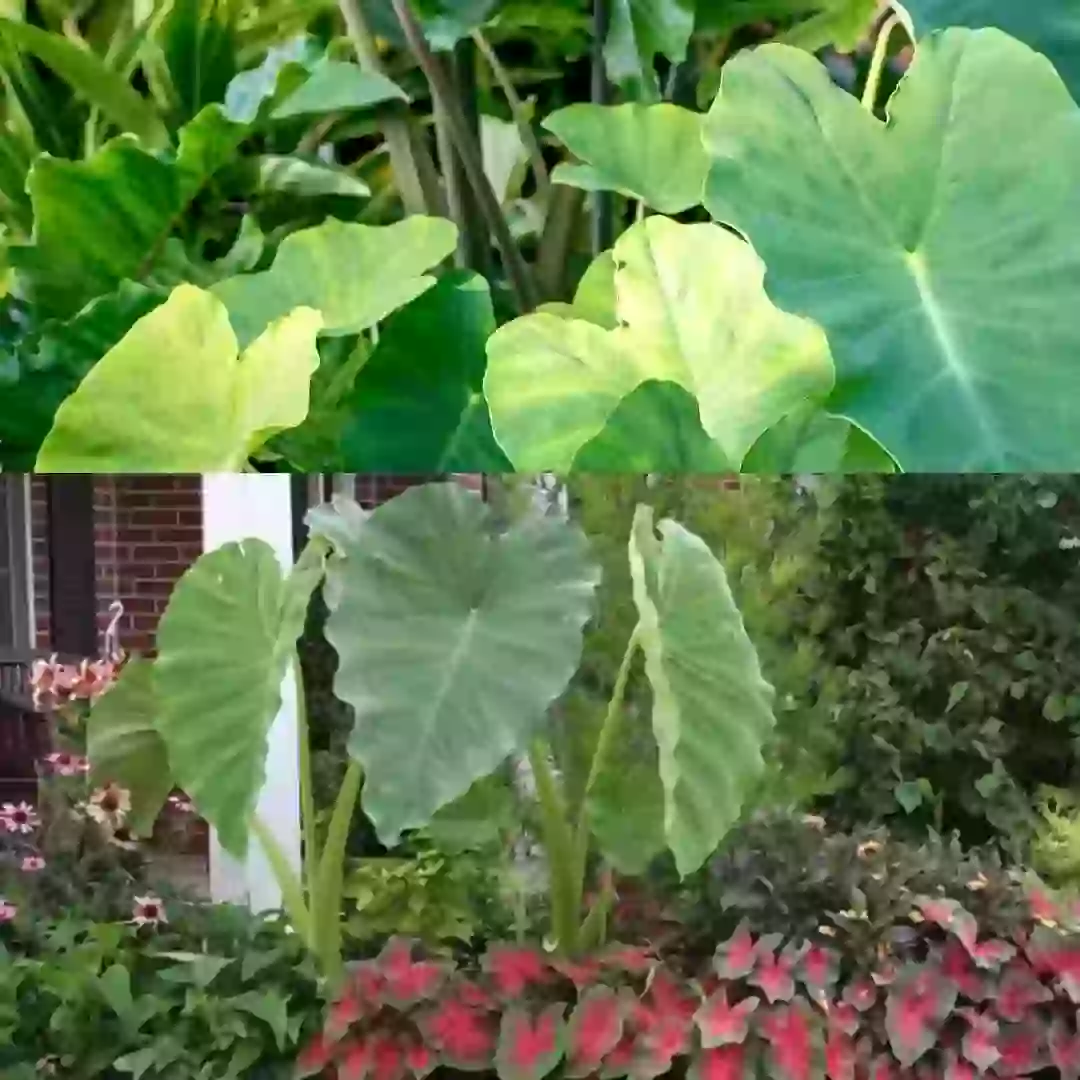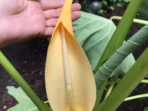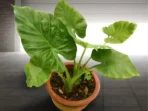This plant loves the sun so much. That’s why you can plant it in partial shade or full sun. However, it would be best grown in partial shade because there are only some cultivars having darker leaves. These types of cultivars need more sun to maintain the color. Other than that, they only need enough.
In general, elephant ear plants are divided into colocasia and alocasia. Alocasia would display their leaves out, where the tip (of the heart) going upward. This one likes a bit of shade and well-drained soil. The Colocasia, on the other hand, would have the tip pointing down. It loves consistent moisture and full sun exposure.
In terms of soil, the plant would grow perfectly in humus-y and rich soil. It should be moist; even close to the point of wet. That’s why this plant would be a perfect option for around water gardens, swampland, marshes, and boggy areas.
The water regulation requires you to keep the plant moist most of the time. The plant is reported to survive quite well in standing water (up to 6 inches of water), but it would be best if water it when the soil isn’t soggy and it is wet. Make sure you keep the soil moist and not completely dry. If you keep the plain in containers, make sure to water it every day. Some may even need several watering times a day. Just check the condition of the top soil. Touch it. If it is moist, you are good. If it isn’t, just add enough water until it becomes moist.
Temperature and Fertilizer
Elephant ear plant would survive the best if they are in a habitat resembles their native surroundings. It is the type of plant that requires constant moisture and humidity, so never let the soil dry out. In colder areas, the plant will likely die. If you want it to strive, you need to dig up the root structures, corms, or tubers and store them during the winter. It’s the only way it can survive the cold.
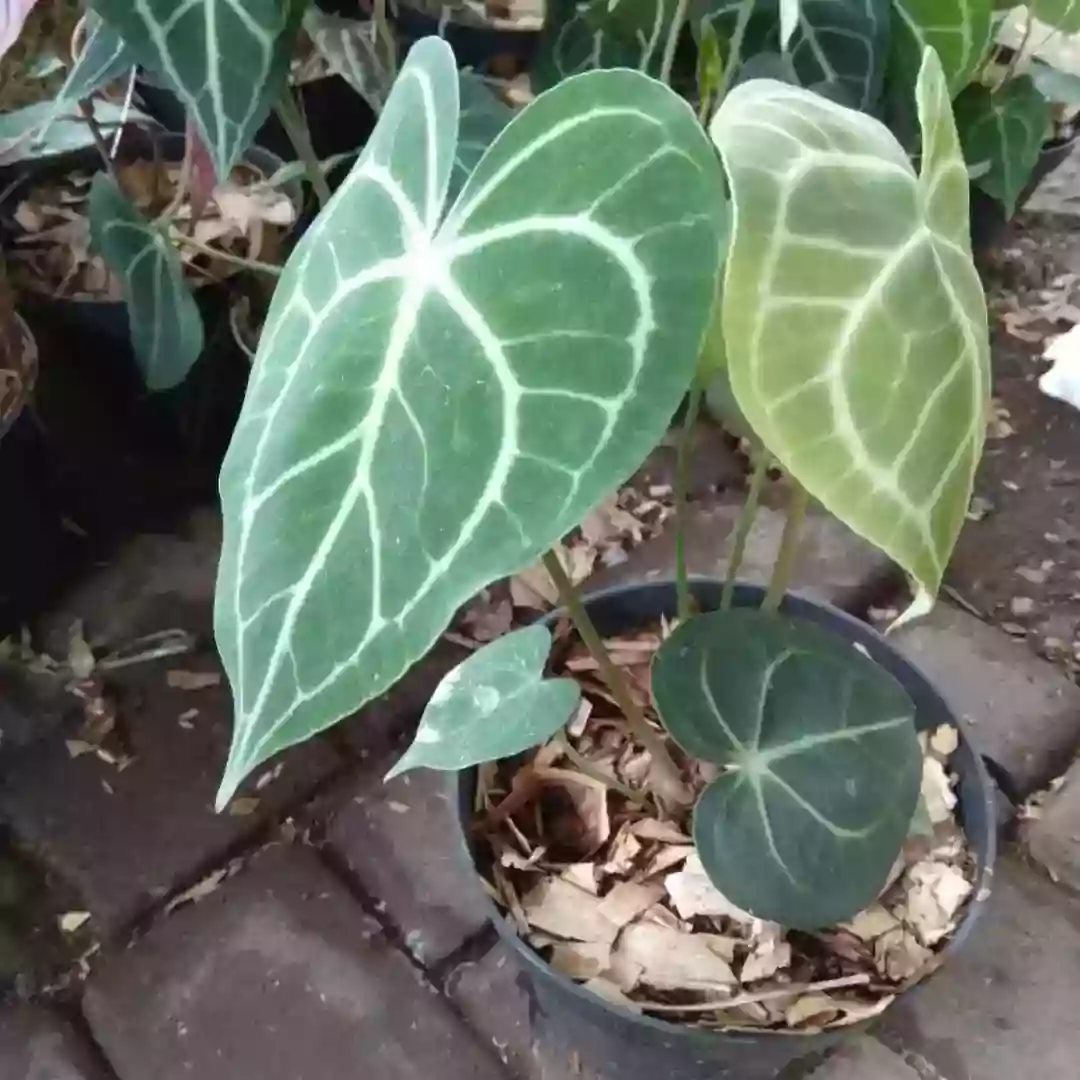
How much should you give it fertilizer? Well, most tropical plants having big leaves are heavy feeders. It means that you may need to give it fertilizer several times within a month. Make sure to choose high-nitrogen type that is water soluble, and apply it once every two weeks – three weeks would be the longest without the fertilizer.
Taxonomy Types of Elephant Ear
Based on the taxonomy, Taro (Colocasia Esculenta) is the most common elephant ear species. The genus Xanthosoma and Alocasia also have some of their most popular varieties, which include:
Coffee cups. This is a hybrid type with smaller leaves folding upward, forming a shape of a cup
- Black magic. This is the black cultivate having dusty and purple-black leaves. The leaves slightly fold upwards
- Lime zinger. A part of Xanthosoma genus, the plant is a green cultivar type
- Blue Hawaii. It’s basically a part of Royal Hawaiian Series. It has leaves of medium green with maroon underside and dark black-purple veins.
- Mojito. This one has dull green leaves having irregular speckled, flecked, and black streaked.
- Illustris. It is a part of Colocasia Esculenta Antiquorum, it has leaves in dark green matte and bright green veins. Instead of corms or tubers, it spreads by underground runners.
With these many varieties of elephant ear plant available, which one would you choose?


